
From Dresden to Leipzig: on a damaged manuscript and its new “readable” life
Elisabetta Barili writes about her travels to Leipzig to examine a manuscript made readable by multispectral technology
There is a certain joy in studying a Medieval manuscript and uncovering some of its unreadable pages. Rather than a wizardry of sorts, it is instead a matter of using multispectral technology to enhance the manuscript’s readability. Multispectral imaging (MSI) is a mode of capturing images and related data from heritage objects, including manuscripts that have been damaged or written over. By taking a sequence of photographs at several wavelengths of light thanks to the use of filters and tailored hardware and software, it is possible to capture information not seen by the human eye.
For the past three years, when working on my PhD dissertation, I have been examining several manuscripts to collect all the textual witnesses of John Tzetzes’ Commentary on Hermogenes’ On Forms. In twelfth-century Constantinople the scholar John Tzetzes (ca. 1110–1180) composed an extensive commentary in fifteen-syllable verse on the so-called corpus Hermogenianum, a group of handbooks from the Graeco-Roman times used in rhetorical training throughout centuries (i.e. Apththonios’ Progymnasmata, and Hermogenes’ and Pseudo-Hermogenes’ On Issues, On Invention, On Forms, On Method of Force). Only few verses of this rather overlooked commentary were published in the nineteenth century. My dissertation offers the first modern critical edition of Tzetzes’ Commentary on the Hermogenean treatise Περὶ ἰδεῶν λόγου (On Forms), that is the fourth piece of the corpus, a key text in rhetorical education. This remarkable commentary offers first-hand insights in twelfth-century rhetorical and educational practices and is preserved by only five manuscripts.
Among those, the Mscr.Dresd.Da.7 was for me a silent and elusive witness, one whose folia could not provide any meaningful information. The thirteenth-century paper codex, preserving Tzetzes’ Commentary on Ps.-Hermogenes’ and Hermogenes’ On Issues, On Invention, On Forms, had been significantly damaged by water in 1945 as a result of the bombing that turned Dresden into a waste land at the end of WWII. Most of the pages look now washed away. The section of On Forms in particular was illegible. You can easily take a look at the manuscript, which was digitized by the Dresden Library in 2011, and is readily available on its website.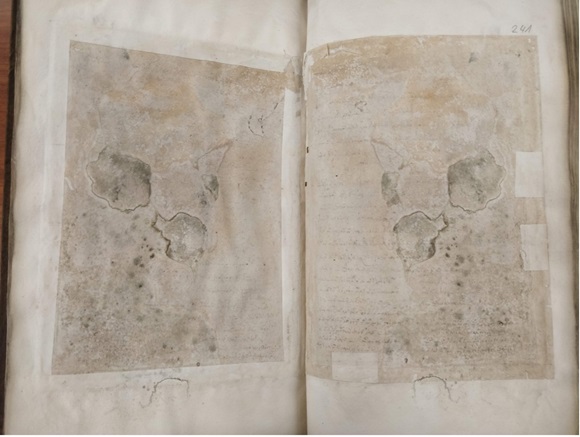
Fig. 1: Mscr.Dresd.Da.7, ff. 240v-241r
Several decades before the war, Christian Walz had been able to consult and read the damaged pages. However, he confined himself to editing the incipit (not even the explicit) of Tzetzes’ Commentary on On Forms in Rhetores Graeci 3, 685–86. Therefore, so far, Walz’s edition has been the primary source for the readings offered by the manuscript, albeit extremely defective (only 26 political verses out of 3380!).
This is where MSI comes to help, as it works especially well for manuscripts that have been damaged by water, just like Da.7. Due to an ongoing project funded by the German Research Foundation (DFG) to catalogue the Greek Dresden manuscripts, the manuscript is currently temporarily in Leipzig. Indeed, the Leipzig Manuscript Centre helps other institutions to catalogue and digitize their own collections of manuscripts. Moreover, as a centre of excellence, it is equipped with highly specialized imaging equipment.
Therefore, after getting in touch with Dr. Christoph Mackert, head of the Leipzig Manuscript Centre, my supervisor Aglae Pizzone and I decided to travel to the Leipzig University Library last June to examine the Mscr.Dresd.Da.7 through autopsy and, more importantly, to arrange a multispectral digitization of the manuscript. Our mission to Leipzig has been made possible thanks to the Independent Research Fund Denmark, to which we are extremely grateful to have funded the MSI digitization of the manuscript.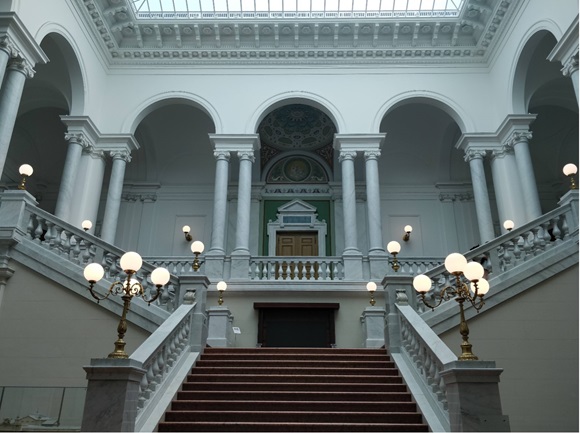
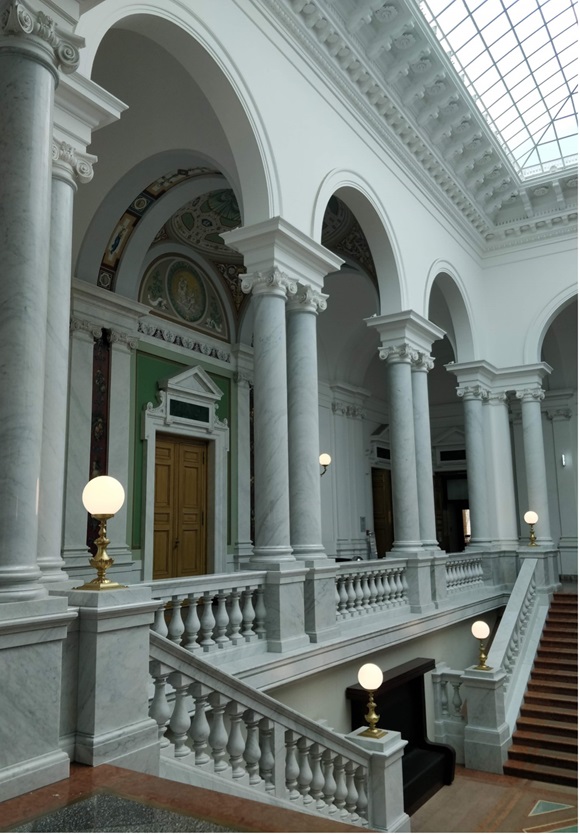
Fig. 2: Bibliotheca Albertina in Leipzig
Once we arrived in Leipzig, we were welcomed in the beautiful lobby of Bibliotheca Albertina by Dr. Friederike Berger, who is currently carrying out the in-depth cataloguing of Greek manuscripts within the DFG project. We had the great opportunity to consult the manuscript in situ along with the valuable information gathered by Dr. Berger during her research, which helped me immensely in describing the manuscript’s place of origin when writing my thesis.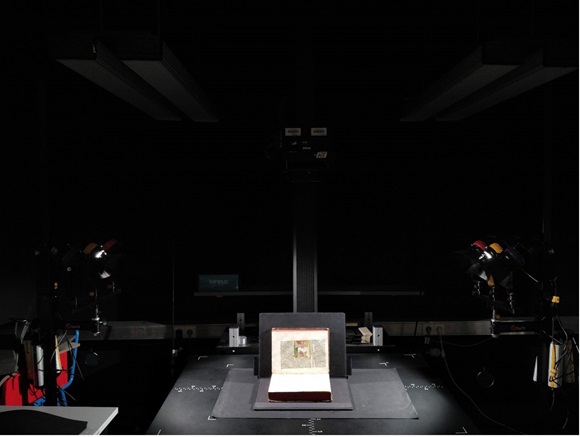
While the first part of the manuscript is more easily readable to the naked eye, from f. 62r onwards the manuscript shows increasing signs of water damage, while from f. 134v to the end the pages look plain blank.
Fortunately, Olaf Mokansky, head of the digitization department and specialist in multispectral photography, presented us with impressive results obtained with their MSI equipment.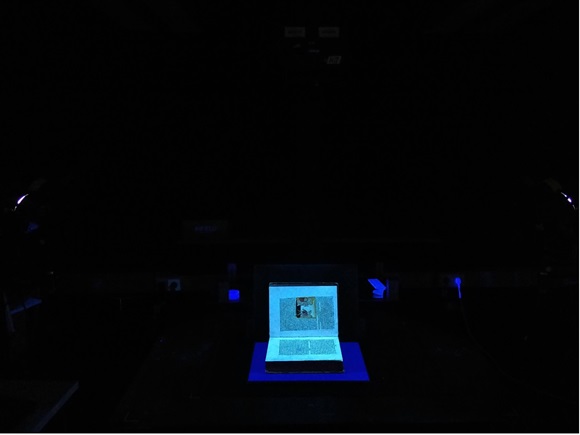
Fig 3: Laboratory of the digitization department at the University of Leipzig
We were full of hope, but reality exceeded even our wildest expectations: most of the nearly unreadable pages became almost entirely readable! The first result which blew our minds can be seen below.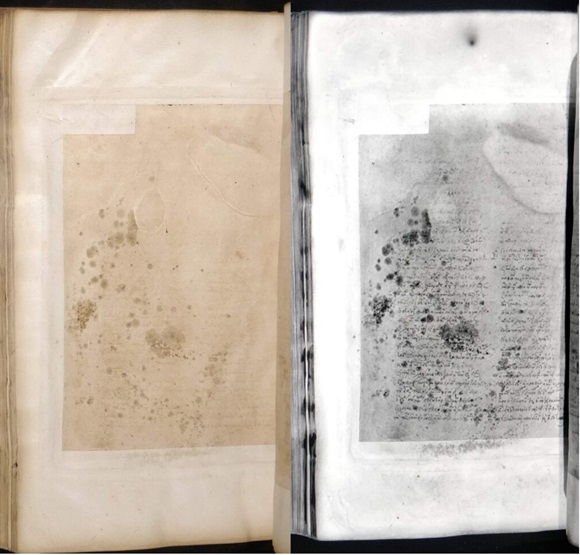
Fig 4: Mscr.Dresd.Da.7, f. 231v
It was not necessary to use all filters, but the text of the manuscript has been revealed primarily thanks to the UV light at 365nm with filter BG39 + Baader. Using the software CaptureOne Cultural Heritage the images have been processed with UV Fluorescence with modified contrast and exposure. The images have been converted into black-and-white pictures, because no relevant color information is included.
Unfortunately, due to the considerable water damage, not all pages are readable through MSI. However, this process has helped me immensely in reconstructing the portion of Tzetzes’ Commentary preserved by a textual witness that I previously thought was completely unreadable.
Moreover, the manuscript turned out to be more substantial than originally foreseen, as it transmits several of those autograph glosses by Tzetzes that are also found in the “authorized” manuscript Vossianus Graecus Q 1. These elements helped me to reconstruct the stemma codicum of the textual witnesses, arguing that the two manuscripts would represent distinct textual branches of the material that constitutes Tzetzes’ archive, copied and assembled in two different versions. I warmly thank the Leipzig Manuscript Centre and the digitization department for their huge support in our research on the manuscript.
It is undoubtedly safe to say that MSI can be truly beneficial when examining damaged manuscripts and not rarely can revert the course of time and unlock information that has not been seen for a long, long time.